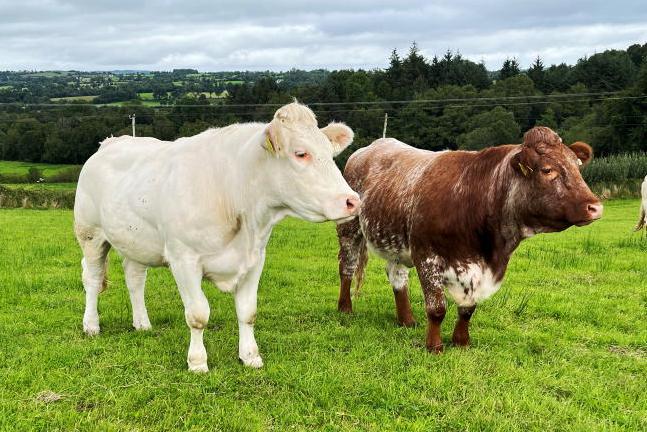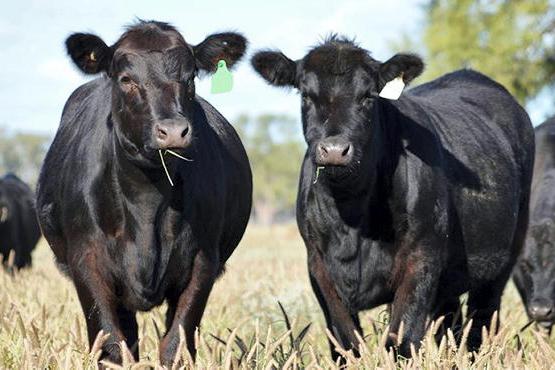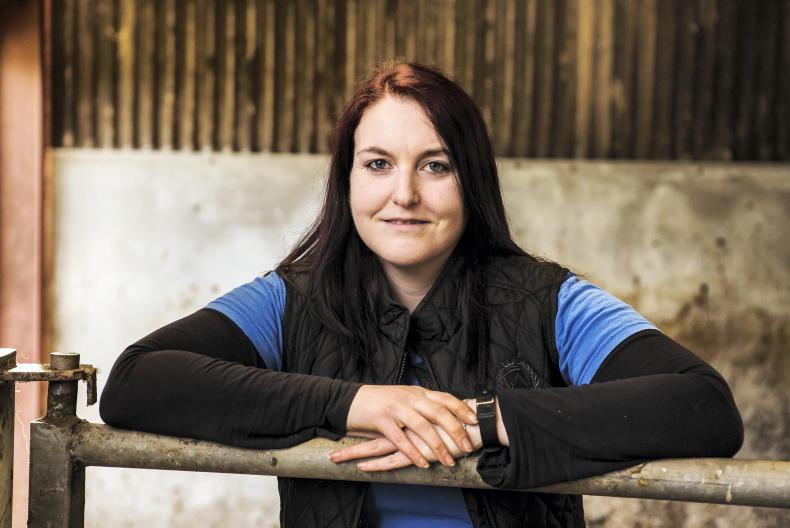Breeding is getting under way on suckler farms with autumn-calving cows.
Breeding females served over the next week will calve down in mid- to late August.
Herd management has a big effect on getting cows back in-calf, both prior to breeding and for the four- to five-week period after animals are served.
Outlined are five tips to managing cows through the autumn breeding period.
1. Housing cows before breeding
Cows that will be served in the next few weeks should be housed now. This will allow animals to transition on to a silage diet before they are bred.
On dry farms that still have plenty of grass and ground conditions will permit animals to stay outside, then think carefully about which cows will remain at grass.
Sudden changes in environment and diet will impact negatively on cow fertility. Cows that will be mated this week should remain outdoors for another couple of weeks to help conception rates, then housed.
In contrast, cows that will be served in mid-November should be housed now. Don’t be tempted to leave these cows at grass for another fortnight, only to end up housing on the point of breeding.
2. Diet
Cows will be at peak milk production when breeding starts, so they have an increasing demand for energy in their diet.
Keeping cows on a consistent diet will improve conception rates. Target the best silage on farm to autumn cows during the breeding period.
Supplement with meal accordingly to increase energy intakes. Trying to cut meal feeding during the breeding period is a false economy. Continue to feed meal for at least 30 days post-breeding to help conception rates.
Silage can be low in trace elements, so offering cows supplementary minerals can boost conception rates.
3. Treating internal and external parasites
Once autumn cows are housed, treat cows for fluke and lice. Maiden heifers and first-calved heifers should be treated for worms. Choose a fluke product that targets the parasite at the early immature stage.
4. Flooring options
The vast majority of cows will be housed on slatted floors. Slats can be slippy and limit mounting activity.
If there is the option, give autumn cows access to sheds with rubber covered slats or solid flooring with a straw lie-back during the breeding period. Breeding activity will increase and, hopefully, so will conception rates.
5. Heat detection and recording service dates
Record as many cows seen in heat as possible, regardless of whether animals are served to AI or stock bulls.
With cows housed, it will be easier to enter a pen and apply some tail paint. This will help pick up on breeding activity, as some cows will have silent or weak heats on slats.
When cows are inseminated or have been seen with the bull, record the date and watch for repeat breeding activity three weeks later.
Again, a cheap aid such as tail paint gives a good indication of which cows have held to the bull and which animals are cycling again.
Read more
Plan to ban crop and rush sprays by 2024
Turkish buyers driving the weanling trade
Breeding is getting under way on suckler farms with autumn-calving cows.
Breeding females served over the next week will calve down in mid- to late August.
Herd management has a big effect on getting cows back in-calf, both prior to breeding and for the four- to five-week period after animals are served.
Outlined are five tips to managing cows through the autumn breeding period.
1. Housing cows before breeding
Cows that will be served in the next few weeks should be housed now. This will allow animals to transition on to a silage diet before they are bred.
On dry farms that still have plenty of grass and ground conditions will permit animals to stay outside, then think carefully about which cows will remain at grass.
Sudden changes in environment and diet will impact negatively on cow fertility. Cows that will be mated this week should remain outdoors for another couple of weeks to help conception rates, then housed.
In contrast, cows that will be served in mid-November should be housed now. Don’t be tempted to leave these cows at grass for another fortnight, only to end up housing on the point of breeding.
2. Diet
Cows will be at peak milk production when breeding starts, so they have an increasing demand for energy in their diet.
Keeping cows on a consistent diet will improve conception rates. Target the best silage on farm to autumn cows during the breeding period.
Supplement with meal accordingly to increase energy intakes. Trying to cut meal feeding during the breeding period is a false economy. Continue to feed meal for at least 30 days post-breeding to help conception rates.
Silage can be low in trace elements, so offering cows supplementary minerals can boost conception rates.
3. Treating internal and external parasites
Once autumn cows are housed, treat cows for fluke and lice. Maiden heifers and first-calved heifers should be treated for worms. Choose a fluke product that targets the parasite at the early immature stage.
4. Flooring options
The vast majority of cows will be housed on slatted floors. Slats can be slippy and limit mounting activity.
If there is the option, give autumn cows access to sheds with rubber covered slats or solid flooring with a straw lie-back during the breeding period. Breeding activity will increase and, hopefully, so will conception rates.
5. Heat detection and recording service dates
Record as many cows seen in heat as possible, regardless of whether animals are served to AI or stock bulls.
With cows housed, it will be easier to enter a pen and apply some tail paint. This will help pick up on breeding activity, as some cows will have silent or weak heats on slats.
When cows are inseminated or have been seen with the bull, record the date and watch for repeat breeding activity three weeks later.
Again, a cheap aid such as tail paint gives a good indication of which cows have held to the bull and which animals are cycling again.
Read more
Plan to ban crop and rush sprays by 2024
Turkish buyers driving the weanling trade










SHARING OPTIONS